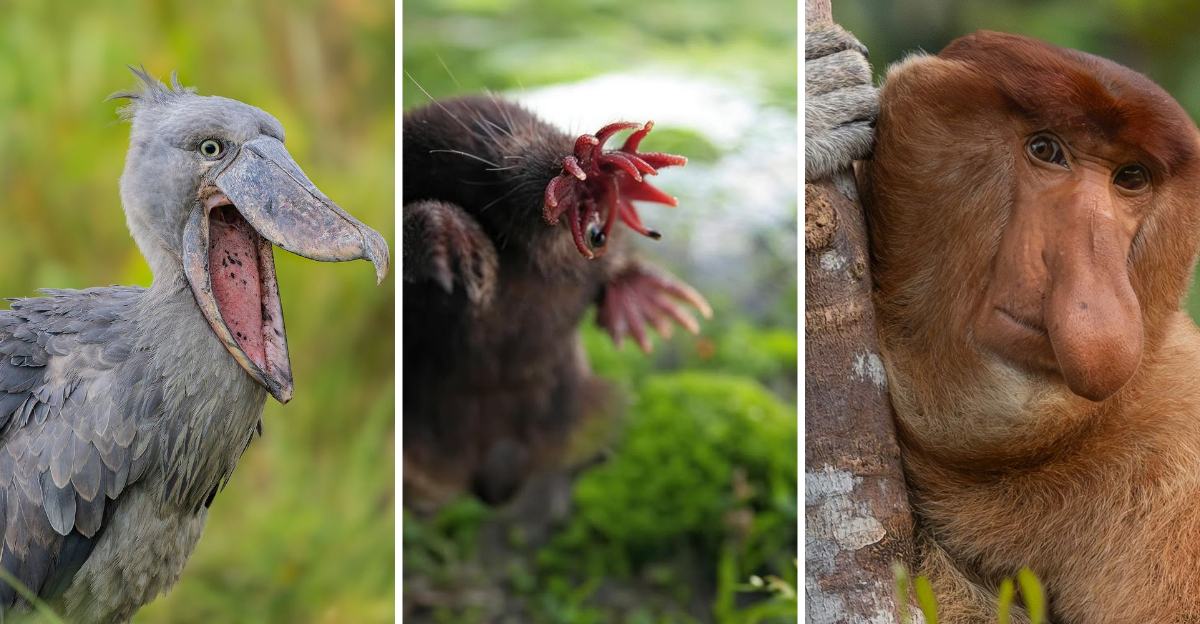Our planet is home to an astonishing array of creatures that seem to defy the norms of Earthly appearance. These animals, with their bizarre and otherworldly features, might easily be mistaken for extraterrestrial beings in a science fiction novel.
From the depths of the ocean to the dense jungles and arid deserts, these extraordinary animals showcase the incredible biodiversity of Earth, challenging our perceptions of what is considered “normal.”
1. Axolotl
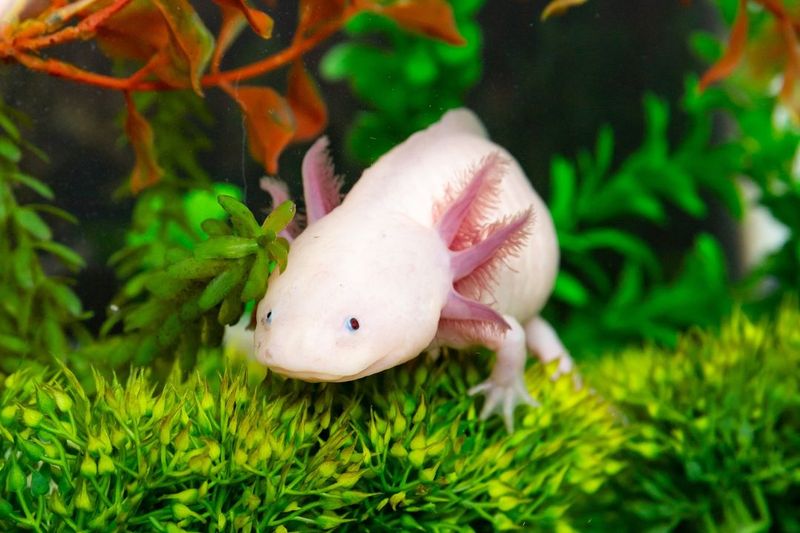
Often referred to as the “Mexican walking fish,” the axolotl is not a fish at all, but an amphibian. Its ability to regenerate limbs and even parts of its brain is nothing short of extraordinary. Inhabiting the lakes of Mexico, this creature retains its larval features throughout its life.
The axolotl’s feathery external gills and wide, smiling mouth give it an undeniably alien appearance. Despite its cute looks, this resilience belies a fragile existence, threatened by pollution and habitat loss. Conservation efforts are underway to ensure its survival.
In captivity, the axolotl is a popular pet due to its unique features and relatively easy care needs. However, it requires specific water conditions and a diet of worms and small fish. Observing it while it twirls around its tank offers a glimpse into a world that seems far removed from our own.
2. Goblin Shark
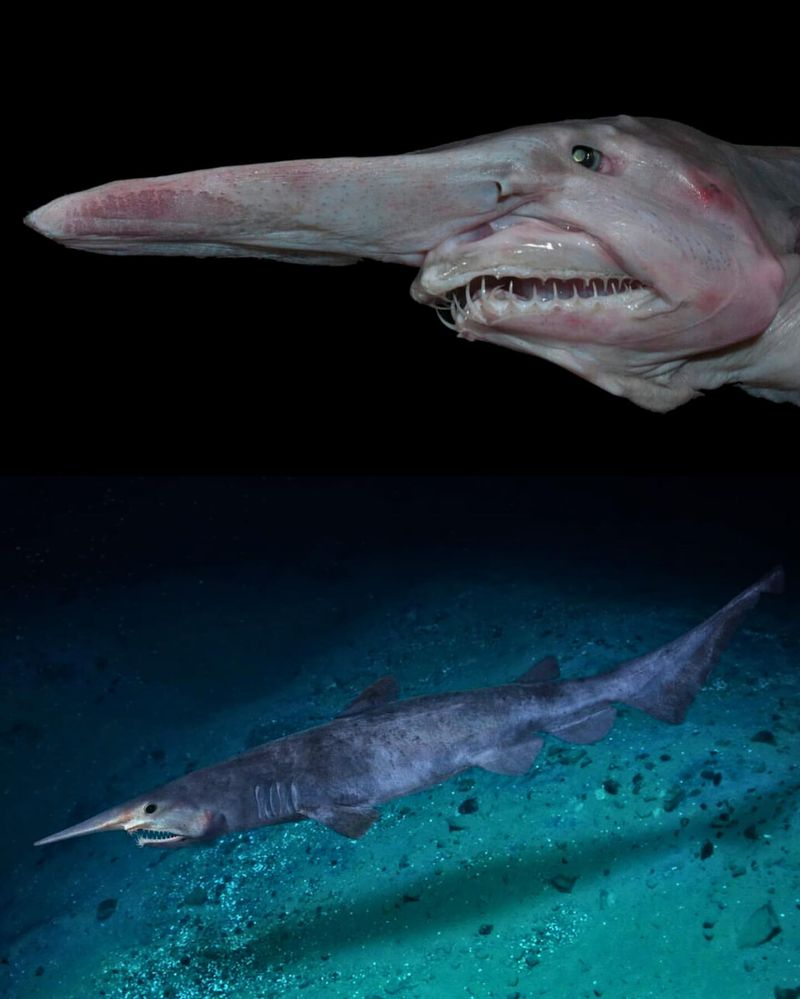
Residing in the deep sea, the goblin shark is rarely seen, making it one of the ocean’s most mysterious inhabitants. Its long, flattened snout and protruding jaws give it an eerie, alien-like appearance. This species uses its snout’s electro-sensitive capabilities to detect prey in the dark depths.
When it finds its meal, its jaws extend dramatically to snatch it. This unique hunting method adds to its otherworldly reputation. Though it can grow up to 12 feet long, the goblin shark is harmless to humans due to its deep-sea habitat.
Its ghostly pink or grayish skin, coupled with its unusual features, ensures it remains one of the most intriguing creatures to grace our oceans, sparking both fear and fascination.
3. Tardigrade
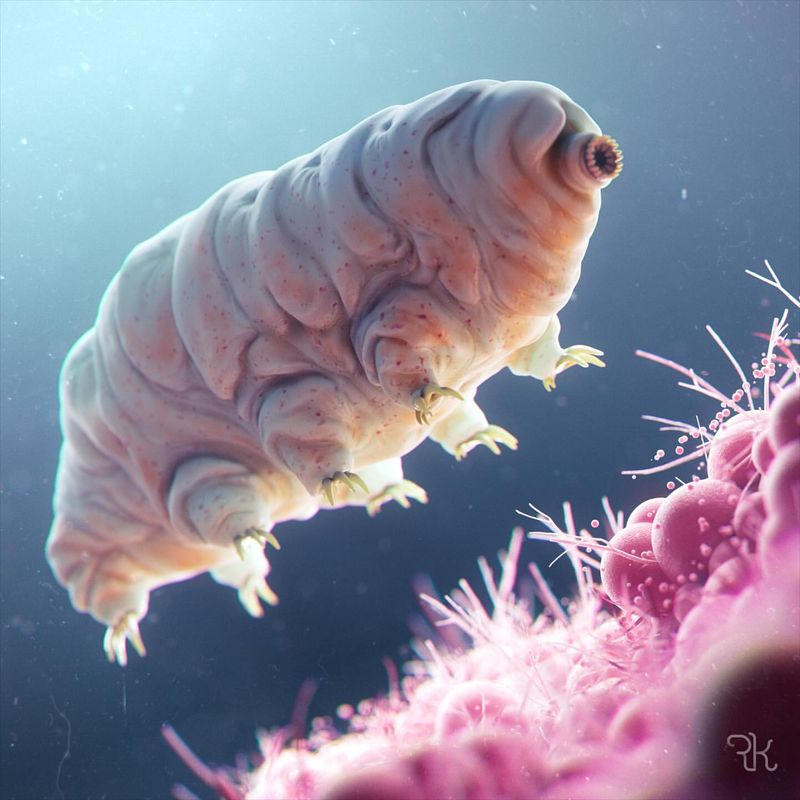
Despite being nearly invisible to the naked eye, tardigrades have earned a reputation as one of the hardiest organisms on Earth. These microscopic creatures can survive extreme conditions, from the vacuum of space to intense radiation. In a way, they have some of the coolest animal superpowers!
Tardigrades are known as “water bears” due to their bear-like gait and plump bodies. Their resilience is attributed to their ability to enter a cryptobiotic state, essentially suspending their metabolism until conditions improve.
These creatures inhabit a wide range of environments, from the deepest ocean trenches to the highest mountain peaks. Their astounding adaptability has made them a subject of fascination for scientists and a symbol of endurance in the face of adversity.
Observing a tardigrade under a microscope reveals a creature that seems more at home in a science fiction tale.
4. Star-Nosed Mole
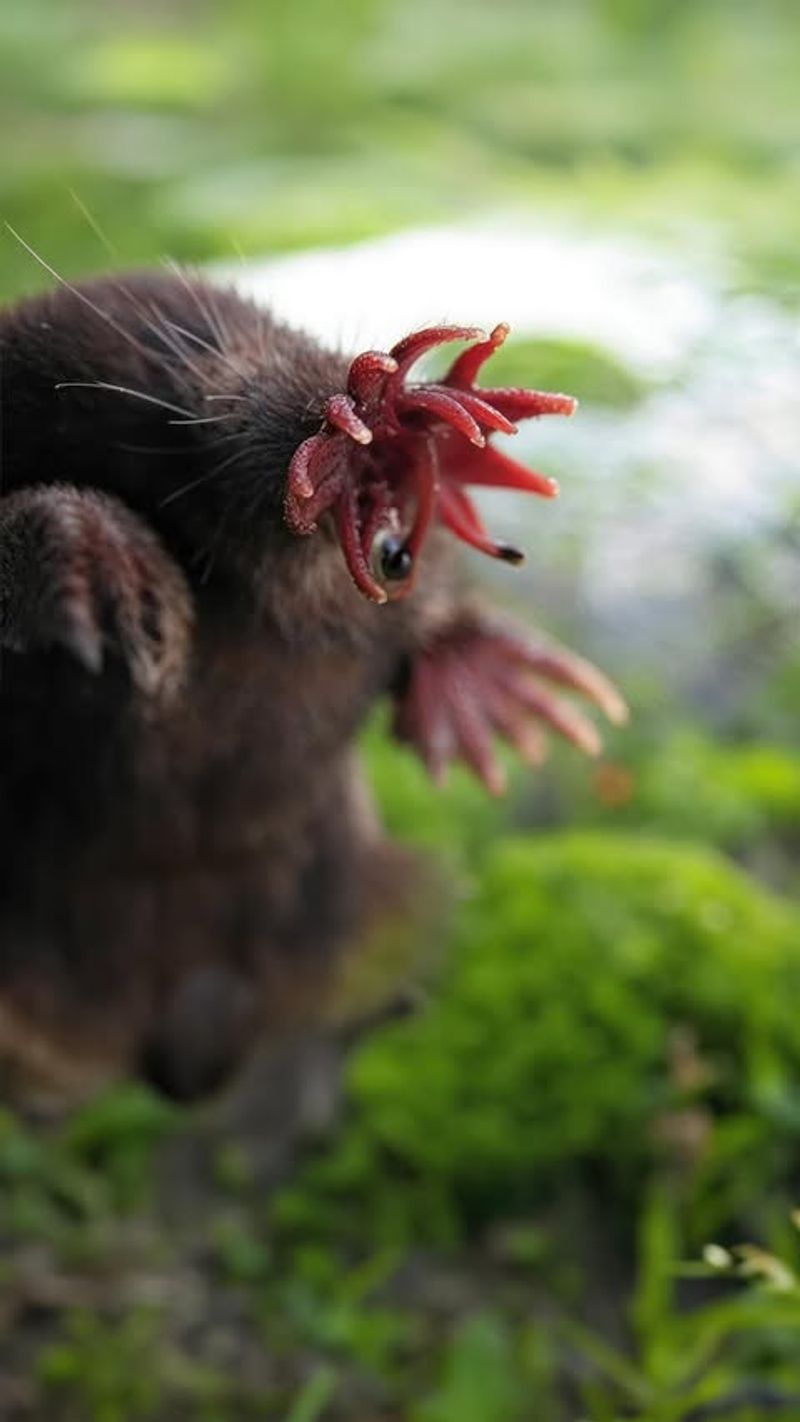
This small mammal is easily recognizable by the unusual, star-shaped appendage at the end of its snout. The star-nosed mole uses this unique structure, covered in thousands of sensory receptors, to detect prey items with remarkable speed and precision.
Found in wet, lowland areas of North America, this mole is an excellent swimmer and often forages in water. Its poor eyesight is compensated by its incredible sense of touch, making its star nose an evolutionary masterpiece.
The star-nosed mole’s appearance may be unexpected to those familiar with more typical moles, but its efficiency in hunting and survival is undeniable. The rapid movements of its star nose as it explores its environment can almost seem like alien technology at work.
5. Leafy Sea Dragon
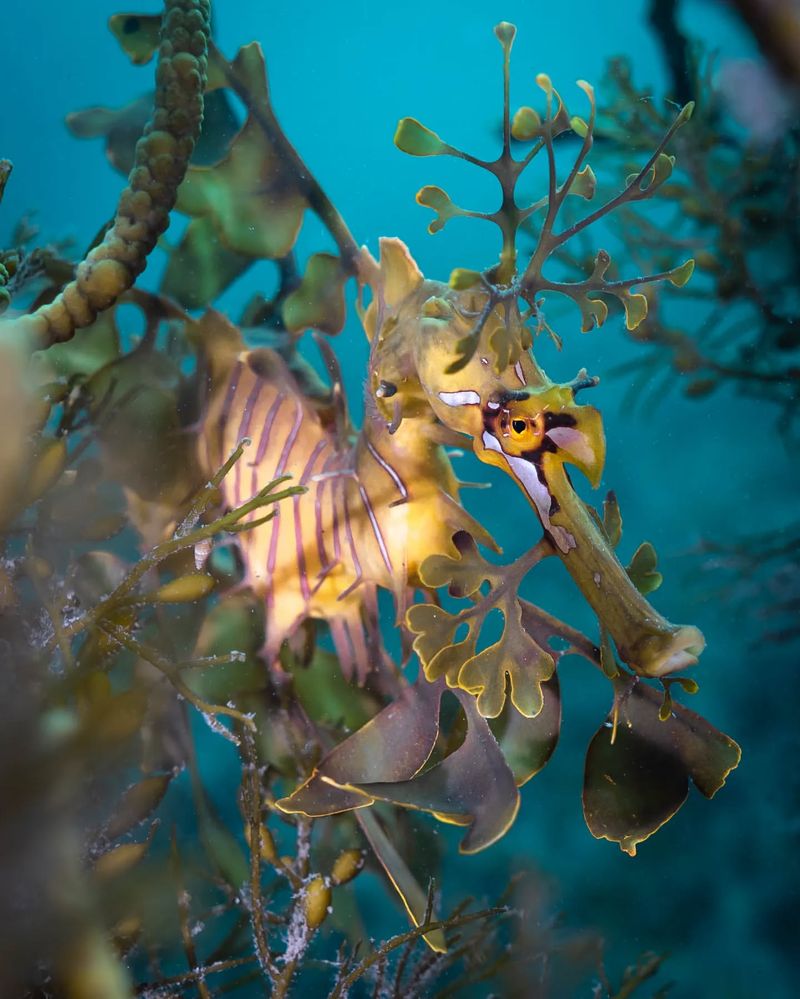
A close relative of the seahorse, the leafy sea dragon boasts an elaborate array of leaf-like appendages that provide camouflage in its seaweed-rich habitat.
These features make it appear more plant than animal. Native to the southern and western coasts of Australia, this slow-moving fish relies on its appearance to avoid predators. Its resemblance to floating seaweed is so effective that it can be difficult to spot, even when nearby.
Despite its delicate appearance, the leafy sea dragon is a master of disguise and survival. Watching it move through the water is like seeing a piece of fantastical artwork come to life. Conservation efforts are crucial, as habitat loss and pollution threaten its existence in the wild.
6. Aye-Aye
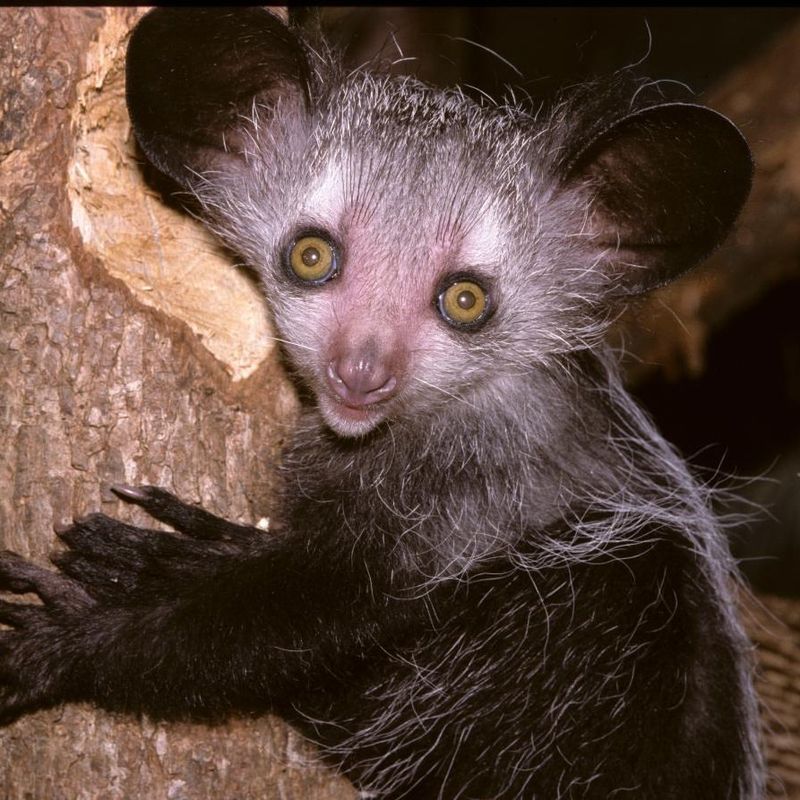
Endemic to Madagascar, the aye-aye is the world’s largest nocturnal primate. Its distinctive features include large, bat-like ears and a long, middle finger, which it uses to tap on trees to locate grubs. This primate’s appearance has led to superstitions among locals, some of whom see it as an omen.
In reality, the aye-aye plays a crucial role in its ecosystem by controlling insect populations. With a keen sense of hearing, the aye-aye listens for the hollow sound of wood-boring insects, then uses its specialized finger to extract them.
This method of foraging showcases the incredible adaptability of this unique primate. Conservation efforts aim to protect its dwindling habitat.
7. Saiga Antelope
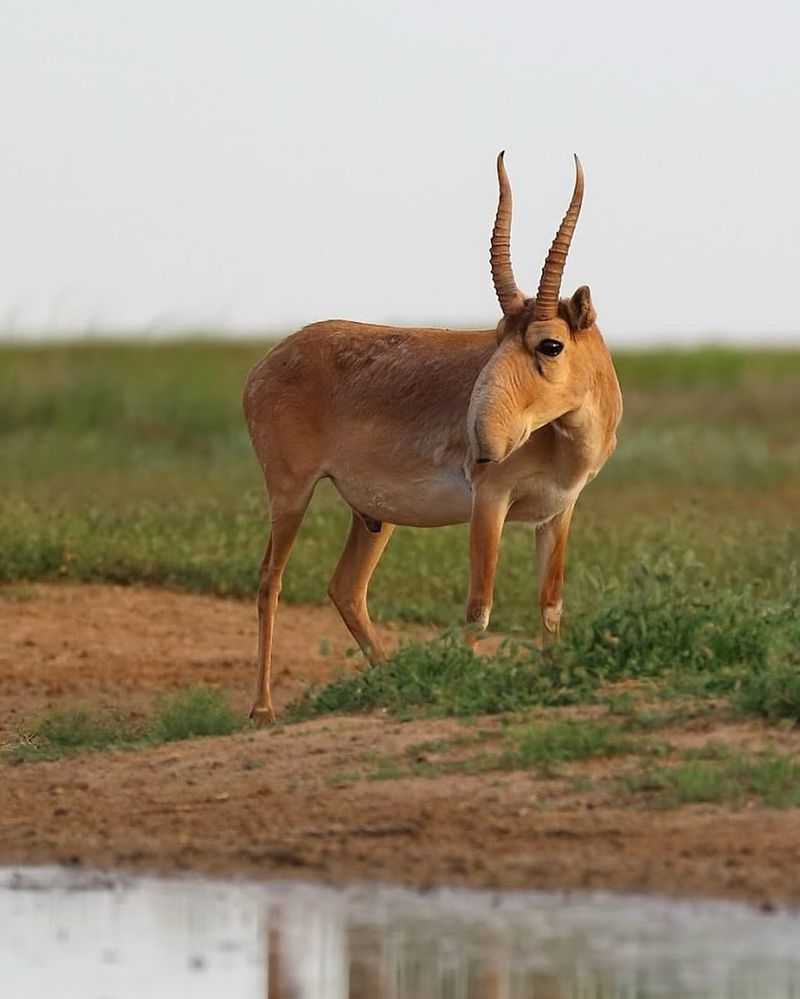
The saiga antelope stands out in the animal kingdom due to its distinctive, oversized nose. This unique adaptation helps filter dust during migrations and regulates body temperature.
Native to the steppes of Central Asia, saiga antelopes are critically endangered due to poaching and habitat loss. Their unusual appearance has both fascinated and bewildered those who encounter them. During the harsh winters, the antelope’s nostrils warm the icy air before it reaches their lungs.
Their numbers have dwindled, prompting conservationists to take urgent action to protect this extraordinary species. The saiga’s bizarre yet functional nose proves that nature never ceases to amaze with its innovative solutions.
8. Shoebill
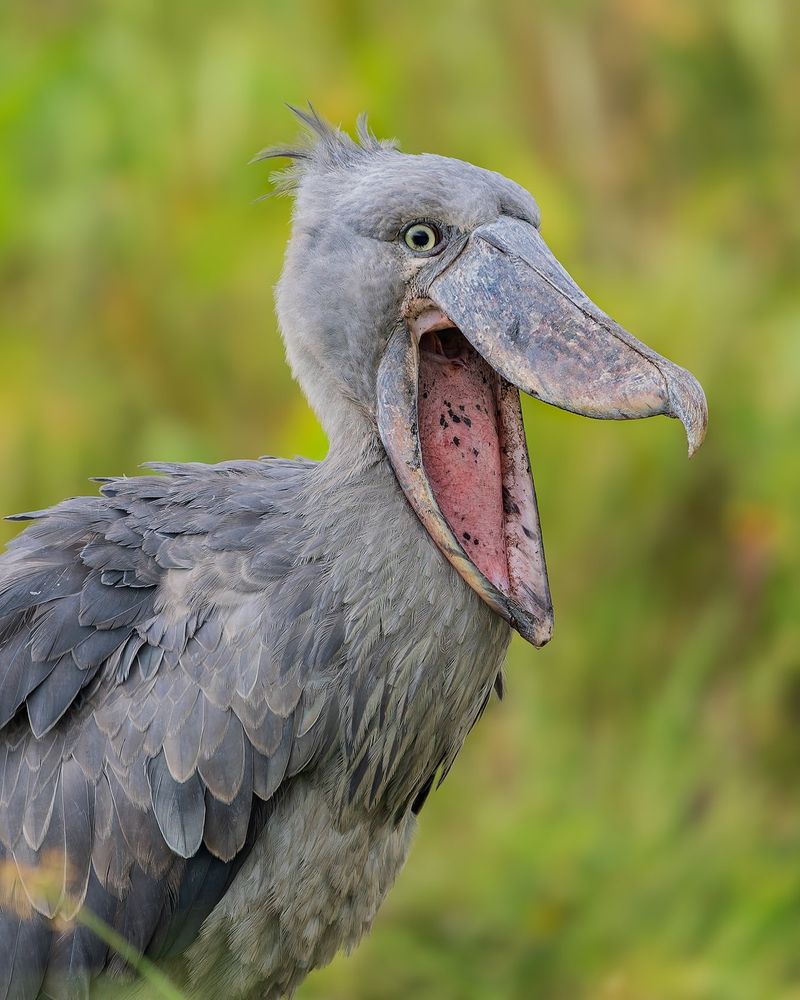
The shoebill, often compared to a creature from prehistoric times, is distinguished by its massive, shoe-shaped bill. This bird, native to the swamps of East Africa, uses its formidable beak to catch large fish such as lungfish and even young crocodiles.
Its slow, deliberate movements and piercing stare make the shoebill appear almost statuesque. Despite its size, it remains remarkably stealthy, relying on patience and precision to hunt. Conservationists are working to protect the shoebill’s habitat, as wetland degradation poses a significant threat.
Observing a shoebill in the wild is akin to stepping into a world where time stands still, and ancient creatures roam the earth.
9. Narwhal
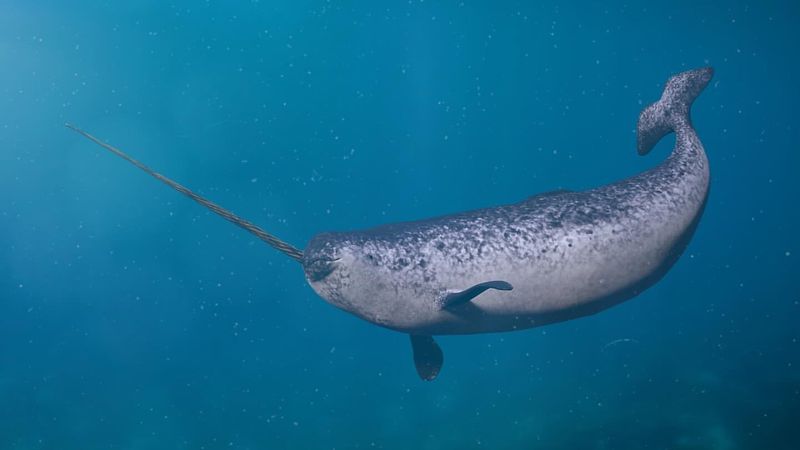
Often dubbed the “unicorn of the sea,” the narwhal is famous for its long, spiral tusk, which is an elongated tooth. Found in Arctic waters, this mysterious whale uses its tusk for sensing environmental changes and possibly even for communication.
Narwhals are social creatures, often seen in groups navigating the icy waters. Their tusks have intrigued humans for centuries, inspiring myths and legends. As Arctic ice declines, narwhals face new challenges, making conservation efforts vital.
Their unique tusks and elusive nature continue to captivate scientists and adventurers alike, offering a glimpse into the hidden depths of the ocean.
10. Mantis Shrimp
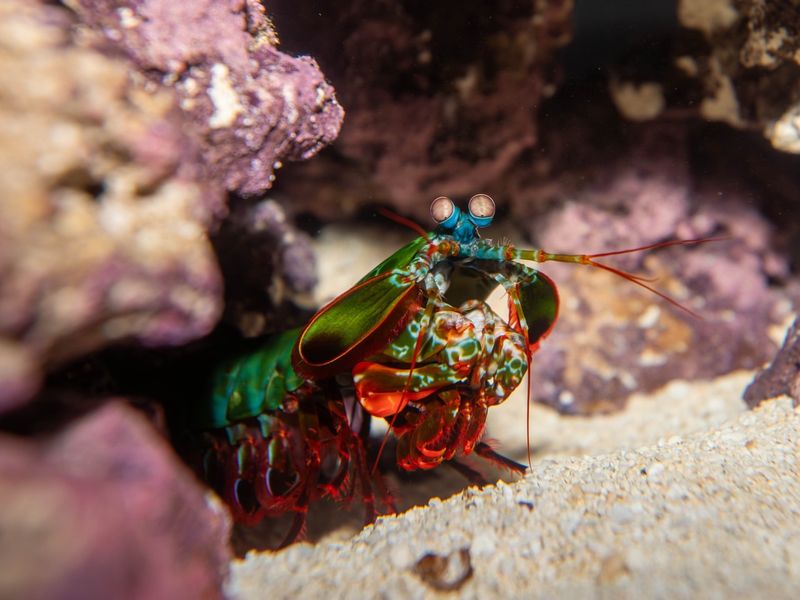
The mantis shrimp is a small marine crustacean known for its vivid colors and extraordinary hunting abilities. Its compound eyes are among the most complex in the animal kingdom, capable of detecting polarized light and seeing in many color spectrums.
Armed with club-like appendages, the mantis shrimp can deliver powerful strikes to prey, sometimes breaking through aquarium glass. This remarkable speed and strength have earned it a fearsome reputation.
Found in warm shallow waters, the mantis shrimp’s vibrant appearance is both beautiful and intimidating. Its complex vision and striking power make it one of the ocean’s most fascinating predators, showcasing nature’s ingenuity and diversity.
11. Vampire Squid
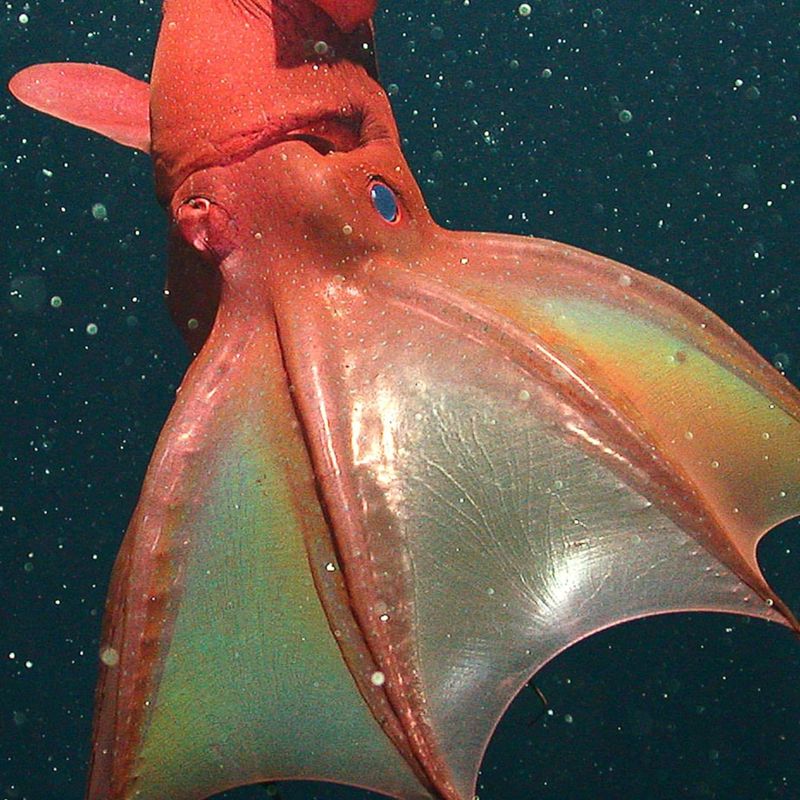
The vampire squid, a deep-sea dweller, earns its name from its dark, webbed arms resembling a cloak. Despite its fearsome name, this creature is not a predator but rather survives on marine detritus. This squid’s ability to invert its arms, displaying spines that deter predators, adds to its otherworldly allure.
Its bioluminescent capabilities allow it to survive in the pitch-black depths of the ocean. The vampire squid’s unique adaptations make it a subject of intrigue for marine biologists.
Observing one in its natural habitat feels like encountering a being from another realm, highlighting the mysteries that lie beneath the ocean’s surface.
12. Glass Frog
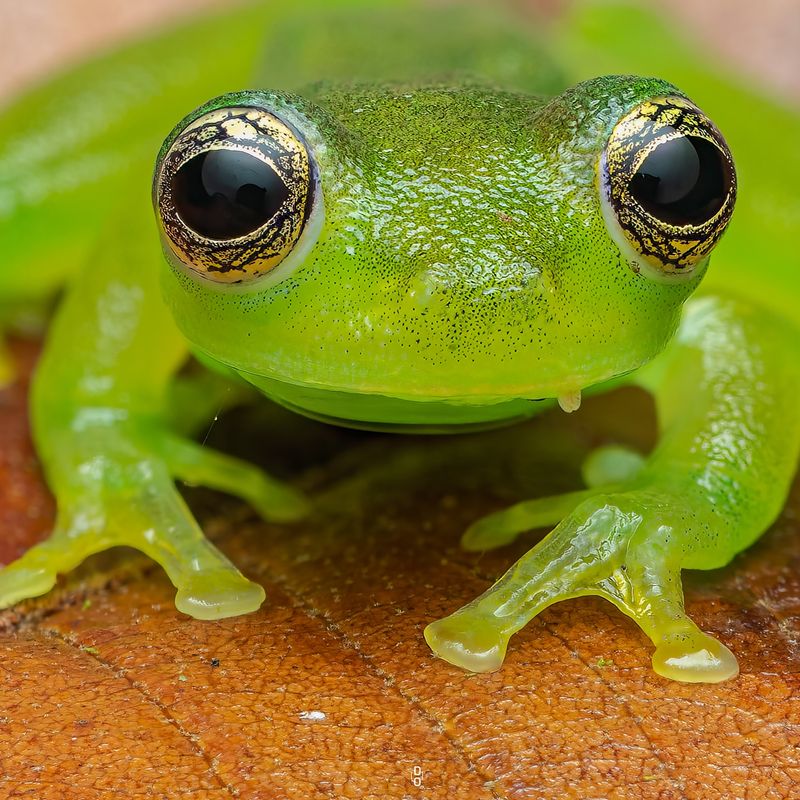
The glass frog, native to Central and South America, is renowned for its translucent skin that reveals internal organs. This unique feature provides camouflage, blending perfectly with its leaf-laden environment.
Mostly found in tropical rainforests, the glass frog’s appearance is as delicate as its habitat. Its transparency is a remarkable adaptation that offers both protection and intrigue. Conservationists are keen to preserve these frogs’ habitats as deforestation poses a significant threat.
The glass frog’s ethereal appearance and vulnerability underscore the importance of conserving the planet’s rich biodiversity.
13. Sea Pig
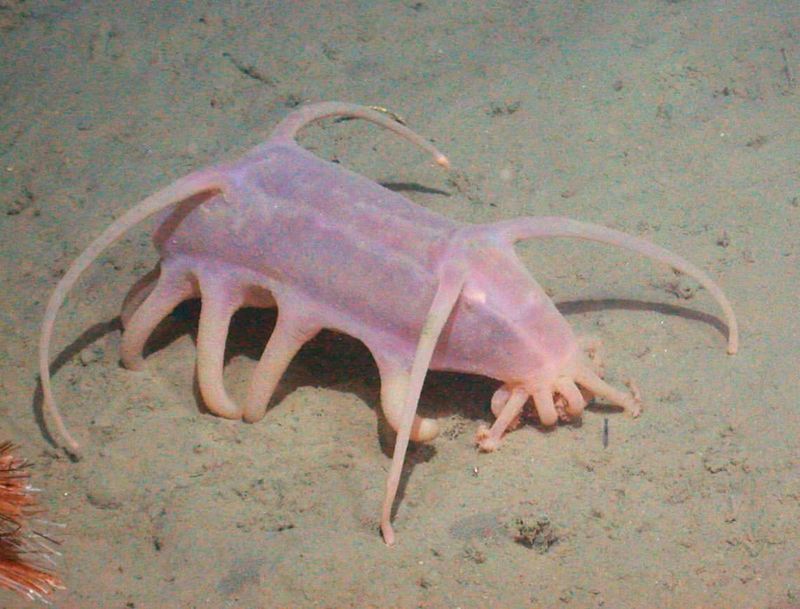
Resembling a creature more likely found on an alien planet, the sea pig inhabits the deep-sea floor. This unusual sea cucumber uses its tube-like legs to move across the ocean bed, feeding on organic particles.
Sea pigs play a crucial role in their ecosystem by recycling nutrients, yet their gelatinous appearance and odd locomotion continue to intrigue and puzzle scientists. Thriving in some of the ocean’s most extreme environments, sea pigs exemplify the bizarre adaptations life can take.
Their presence reminds us of the vast, unexplored possibilities beneath the waves, where life takes on forms we might never imagine.
14. Okapi
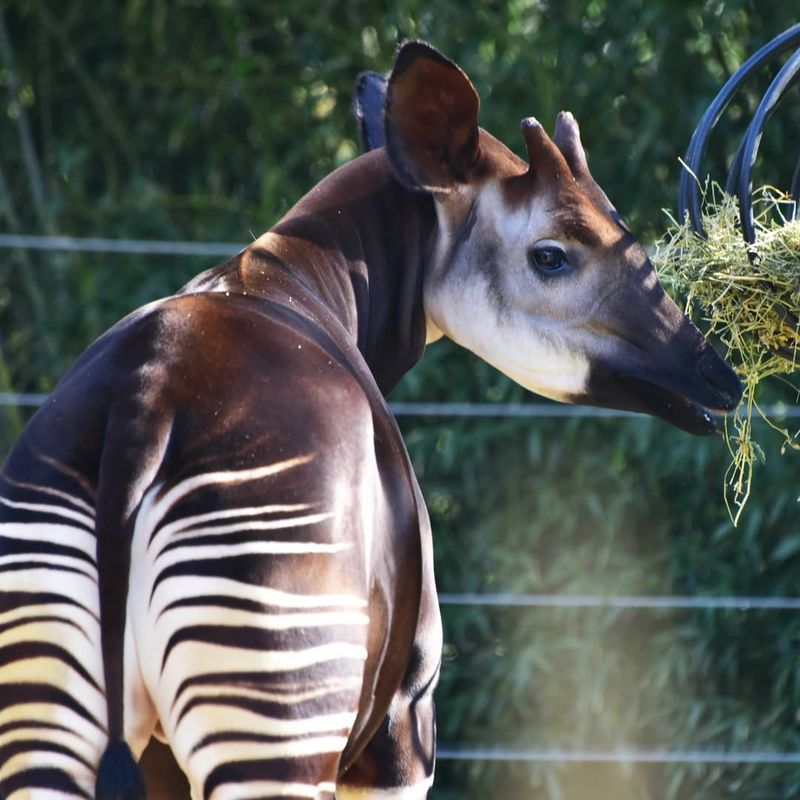
Known as the “forest giraffe,” the okapi resides in the dense rainforests of the Democratic Republic of the Congo. Its blend of zebra-like stripes and giraffe-like body shape makes it a true anomaly among mammals.
Okapis are elusive creatures, and their solitary nature only adds to their mystique. They use their long tongues to strip leaves and buds from trees, much like their giraffe relatives.
Efforts to protect the okapi’s fragile habitat are essential as it faces threats from deforestation and poaching. The okapi’s unique appearance and behaviors highlight the incredible diversity found within the animal kingdom.
15. Blue Dragon
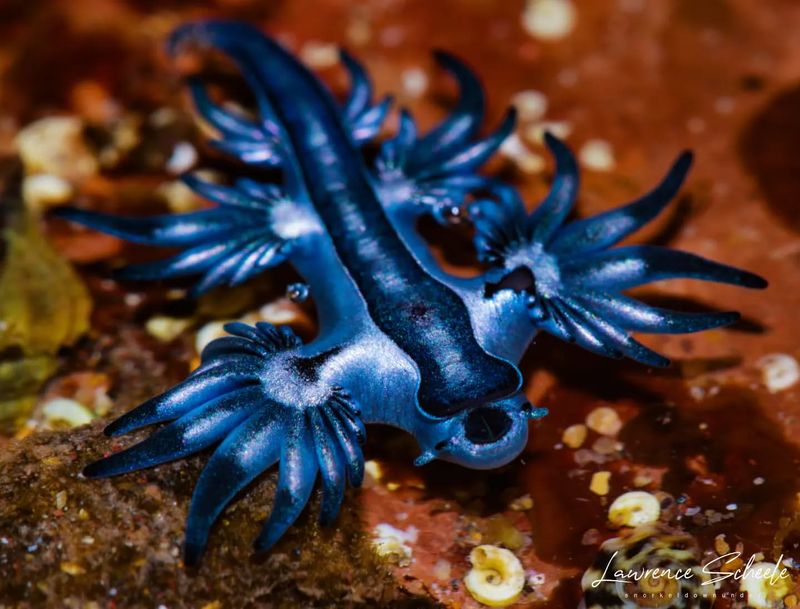
The blue dragon, or Glaucus atlanticus, is a striking sea slug that floats on the ocean surface. Its vibrant blue and silver coloration acts as camouflage against predators from above and below.
Feeding on venomous jellyfish, the blue dragon can store and use their toxins for its own defense, a fascinating example of nature’s adaptability.
The blue dragon’s elegant form and formidable defenses make it a favorite among marine enthusiasts. Observing its delicate movements as it drifts across the water is like watching a living piece of art.
16. Red-Lipped Batfish
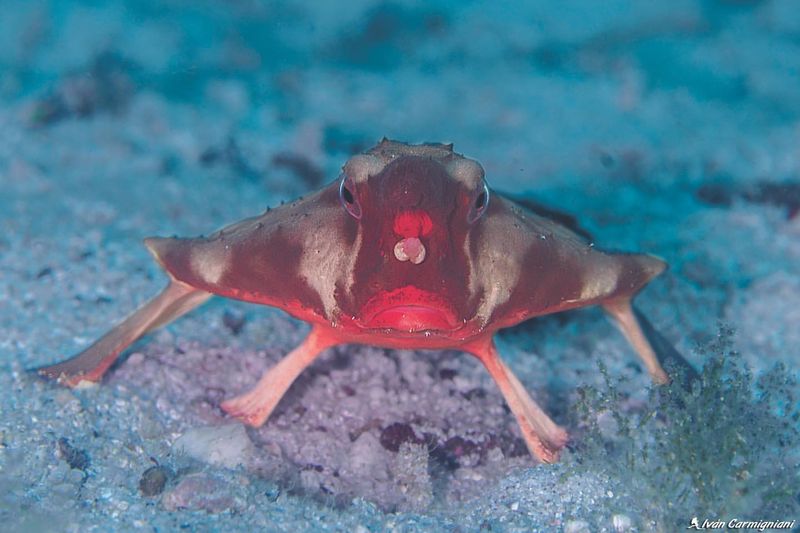
The red-lipped batfish is a peculiar fish known for its bright red lips, giving it a somewhat comical appearance. This fish is found near the Galapagos Islands, walking along the ocean floor on its adapted fins. Its flattened body and awkward gait are reminiscent of a creature from another world.
While it may not be a graceful swimmer, the red-lipped batfish is an effective predator, using its lure to attract prey. The unique appearance and behavior of the red-lipped batfish continue to intrigue scientists and divers alike. Its existence adds to the rich tapestry of life that thrives beneath the ocean’s surface.
17. Proboscis Monkey
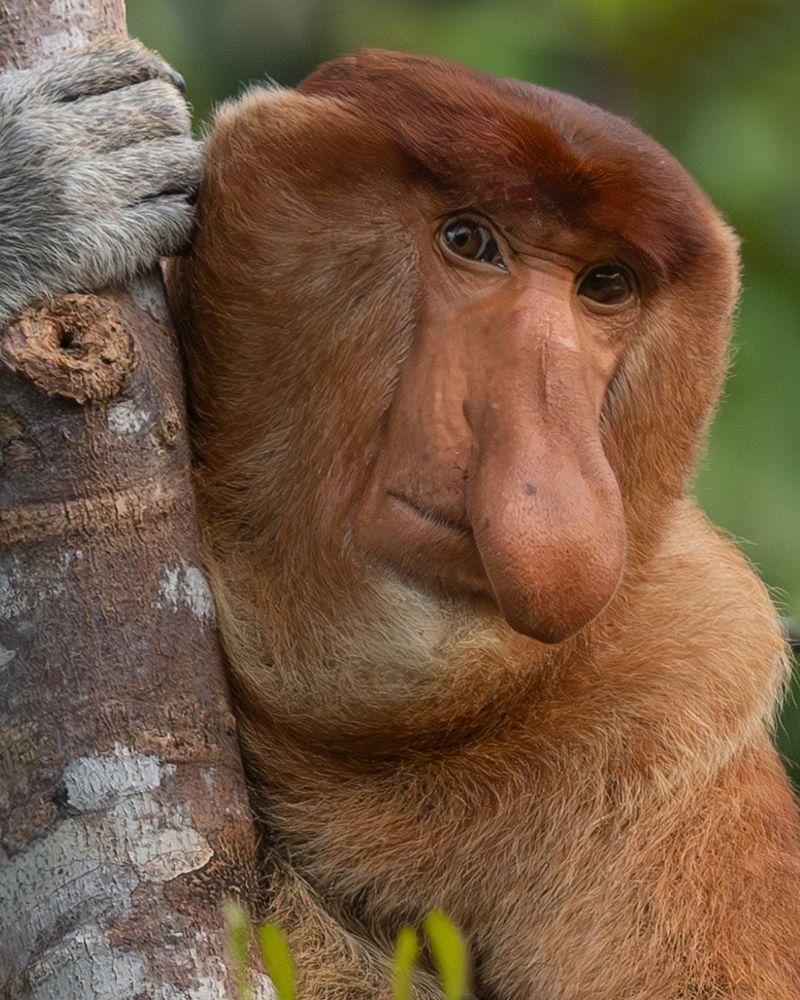
The proboscis monkey is easily identified by its large, pendulous nose, which plays a role in attracting mates. Found in the rainforests of Borneo, this monkey’s pronounced nose gives it a distinctly alien look. Proboscis monkeys are excellent swimmers, often leaping into rivers to escape predators or find food.
Their diet consists mainly of leaves, seeds, and unripe fruits. Conservation efforts are crucial for protecting their diminishing habitat. The proboscis monkey’s unique features and behaviors offer insight into the complexities of evolution and adaptation, reminding us of nature’s endless creativity.
18. Anglerfish
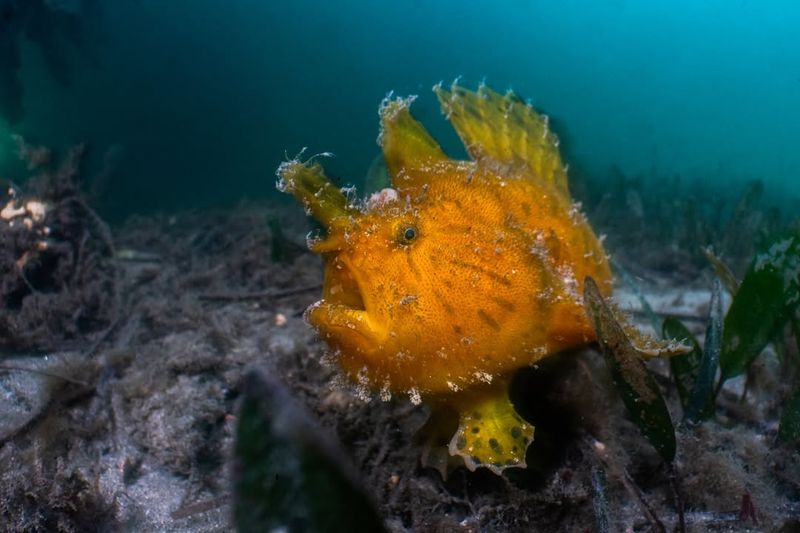
Dwelling in the murky depths of the ocean, the anglerfish is known for its bioluminescent lure that dangles from its head. This adaptation helps it attract prey in the dark, cold waters of the deep sea.
The anglerfish’s grotesque appearance, with sharp teeth and a disproportionately large mouth, gives it an undeniably alien aura. Despite its fearsome look, it’s relatively small in size. This fish’s unique lifestyle and adaptations provide a glimpse into the extreme conditions of the deep sea.
19. Platypus
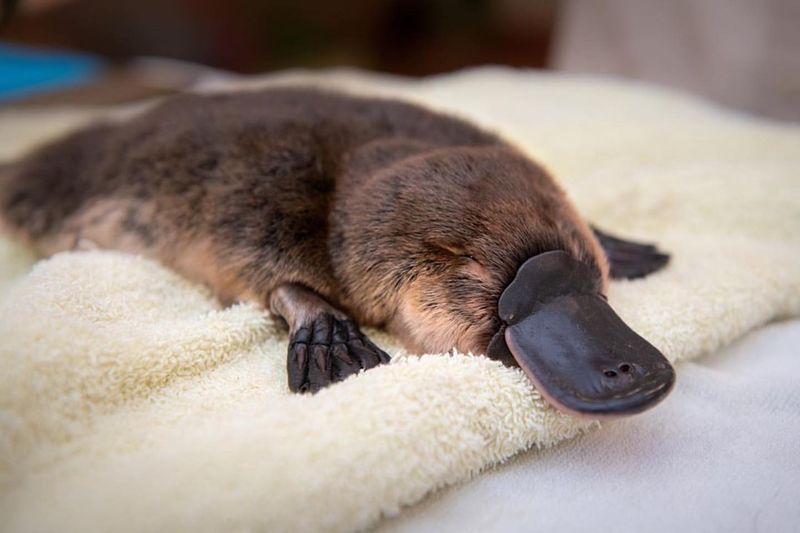
Perhaps one of the most peculiar creatures known, the platypus defies categorization with its duck-like bill, webbed feet, and egg-laying habits. Native to Australia, the platypus is a monotreme, a primitive order of mammals.
Its unusual characteristics puzzled early European naturalists who struggled to classify it. The platypus uses its bill to detect electric signals emitted by prey in the water. Threatened by habitat destruction and water pollution, conservationists work diligently to ensure its survival.

